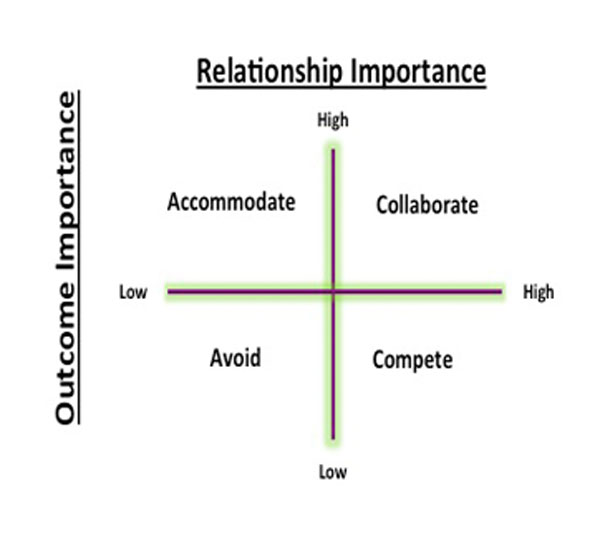It was a mess. A large government agency administered contracts through individuals and departments scattered across the country. The process had broken down so badly that substantial amounts of money were at risk, contracts were disappearing into “black holes,” and legal action was pending. Emails were flying back and forth with as many as 33 cc’d recipients. Everyone was engaged in CYA.
The group needed to determine the cause of the problems and how to rectify the situation. When I arrived at their conference room to help, group members were convened in the lobby with their attorneys, and their managers were saying that no one could enter the room without representation. Not exactly your classic “negotiation” scenario, but I was able to apply a useful negotiation model (see below) to describe where things were breaking down, get everyone pulling in the same direction and ultimately fix the process.
Most people think of negotiating as a group of people sitting around a table, trying to work out a deal. The word “negotiate” often means “to arrange settlement of terms,” as in a business transaction. But there’s another definition as well: “to move through in a satisfactory manner,” as in difficult terrain. This latter definition can apply to all kinds of business situations. Managing a team, for example or bringing disparate departments together to support a company-wide initiative. Or fixing a broken process where bottlenecks and disconnects impede effectiveness, like the situation above.
Negotiation Approaches
In their 2007 book, Mastering Business Negotiation, Roy J. Lewicki and Alexander Hiam describe four possible approaches that can be taken toward conflict resolution:
- Avoidance
- Accommodation
- Competition
- Collaboration
Which approach you use should be based on the relative importance of two dimensions:
- the importance of the outcome, and
- the importance of the relationship.
I put this in the ever-valuable 2 x 2 graph form to illustrate:
The Most Successful Approach
Each approach is appropriate in the right circumstances however, most successful, durable solutions within an organization are those that result from collaboration. Here’s why:
- Over time, you are likely to be negotiating with the same players about different issues. What happens in one negotiation impacts the expectations and attitudes in the next.
- A great deal of energy is lost by using the other approaches. Energy that could be better used to develop innovative solutions.
- Solutions arrived at by the other 3 approaches are often unstable and fall apart when conditions change. Collaborative solutions tend to stick.
In my experience, people tend to default to either competition or accommodation. Both tend to create win/lose situations, which, even if they resolve the immediate issue at hand, inevitably create other problems down the road. The group I was working with had engaged in all three of the other approaches. Some had accommodated. They had agreed to “go along” to “get long,” despite the fact that crucial elements of the problem were not being addressed. They had competed, vying with each other to have their solution implemented and sending those cc’d emails to demonstrate that they had the correct answer. And they avoided. Feeling that there was no good solution, they simply wished the problem away. When I arrived, unexecuted contracts were piling up in bottom desk drawers.
So how to get to win/win? It was not enough for the  boss to say, “OK, now everyone collaborate.” Everyone agreed theoretically that collaboration was the optimal approach, they just didn’t think it was possible.
boss to say, “OK, now everyone collaborate.” Everyone agreed theoretically that collaboration was the optimal approach, they just didn’t think it was possible.
It’s not rocket science to agree that collaboration makes sense. Why then, is it not that easy? Often there are organizational barriers, but those barriers exist because organizations are composed of human beings. And although we’ve evolved in some ways to work together, we have remnants of our primitive brain that can make it difficult. The human brain still reacts in consistent, well-understood, yet sometimes counter-productive ways to specific situations.
In future posts/emails, I will explain some important facts of brain anatomy that determine human responses in typical business situations. I will also propose several proven strategies for leveraging these realities to create win/win outcomes for your organization, your team and your external business relationships.
Feel free to share this article with other business leaders and associates by clicking one of the links below. To improve your organization’s outcomes contact me, joanne.irving@i2aa.com or 301-943-3074.

